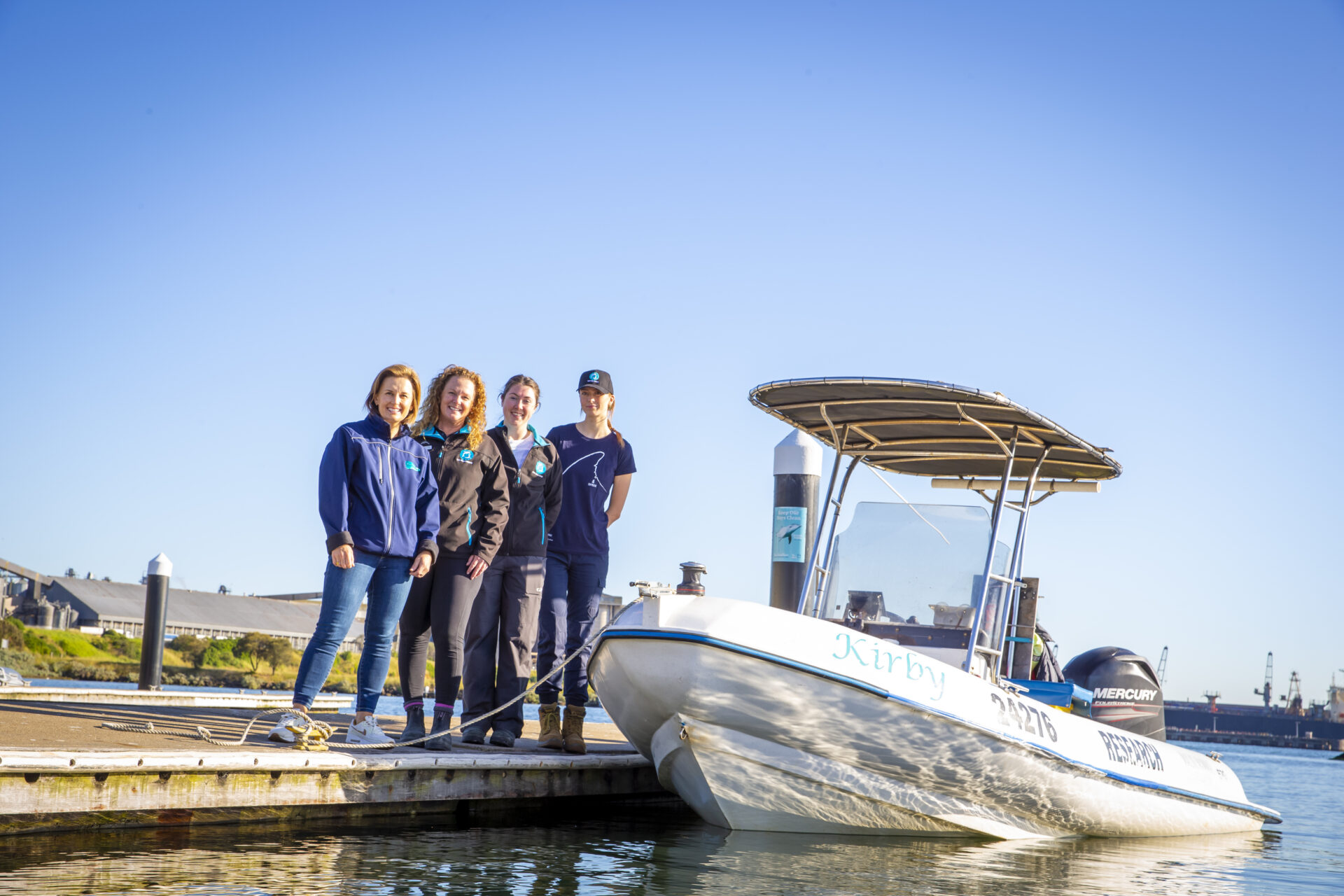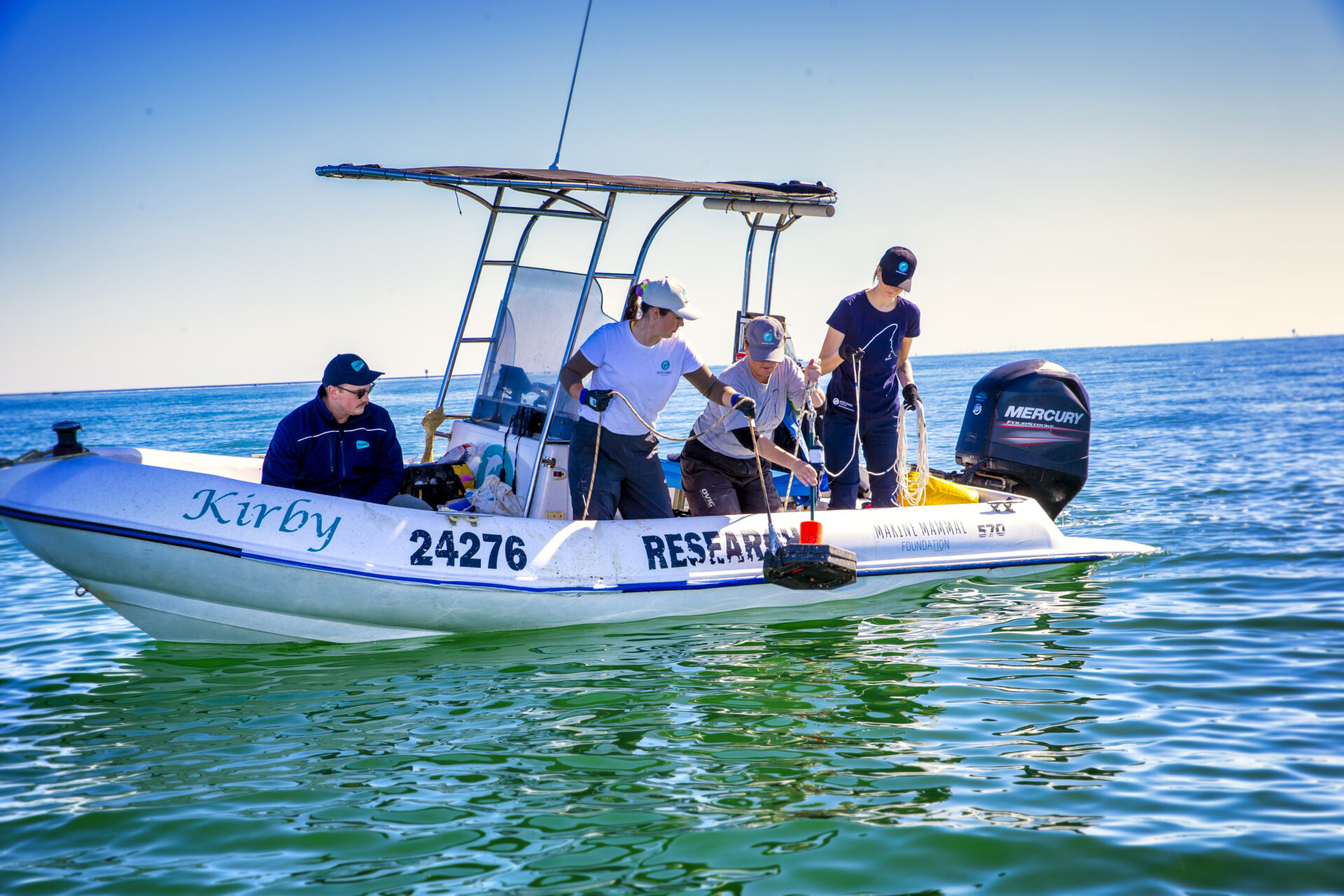GeelongPort and the Marine Mammal Foundation (the Foundation) are joining forces to help Geelong and its community learn more about a species of local critically endangered dolphins.
Recent surveys conducted by the Foundation showed that the Burrunan dolphins – which are only found in Victoria, Tasmania and South Australia – call Corio Bay home, but data about the rare species is limited.
That is all about to change though, with GeelongPort helping the Foundation monitor the critically endangered species in Corio Bay through a non-invasive method of recording vocalising marine mammals.
The partnership will use innovative passive acoustic monitoring stations to eavesdrop on the dolphins on a 24-hour basis, even when the researchers are not on the water.
The stations will also be able to assess the marine soundscape and identify if other marine animals are using the area.
GeelongPort General Manager of Sustainability Dr Lisa Mills said the partnership with Marine Mammal Foundation was an important opportunity to discover how Burrunan dolphins use Corio Bay as a regular habitat.
“Through our support of Marine Mammal Foundation’s research programs, GeelongPort hopes to ensure the Burrunan dolphins are better understood and protected for future generations to enjoy,” she said.
Dr Kate Robb Marine Mammal Foundation Director said the foundation’s Project Burrunan was the only research program of its kind in Victoria.
“Limited boat-based surveys conducted in Corio Bay, coupled with citizen science reports, indicate this region is significant to the Burrunan dolphin,” she said.
“However, we have limited information on their regular presence in the area, much less their behaviours while using this habitat, such as foraging, resting and calving.”
“By understanding how the dolphins are using Corio Bay we are able to establish the significance of the area for the dolphins, but also assess any impacts on the species. While we would love to be on the water across all of our study locations, it is not feasible,” Dr Robb said.
“That led us to think outside the box to explore a new method of detecting dolphin presence and marine soundscape assessment. ”
“It is incredibly exciting to hear for the first time how the Burrunan dolphins are using different areas on a 24-hour basis and enables a greater understanding of their movements, as well as highlight areas of high biological importance.”
“We have been really excited that on each of our preliminary on-water surveys we have observed Burrunan dolphins in Corio Bay, with a fantastic sighting recently of a large mother-calf pod. From the images collected we will be able to identify each of the dolphins and match them against our extensive Burrunan dolphin fin identification catalogue.”
Dr Mills said outcomes from this project could help conserve Corio Bay’s small and threatened population.
“GeelongPort is pleased to help the foundation gain data on the rare Burrunan dolphins in Corio Bay and information that is critical to their existence.”
GeelongPort Sustainability Manager Amy Gillett with Dr Kate Robb, Amber Crittendon and Milly Street from Marine Mammal Foundation with the research vessel used in Corio Bay.

GeelongPort Senior Environment Specialist Nelson Taylor with Amber Crittendon, Dr Kate Robb and Milly Street from Marine Mammal Foundation retrieving an underwater recording device.
